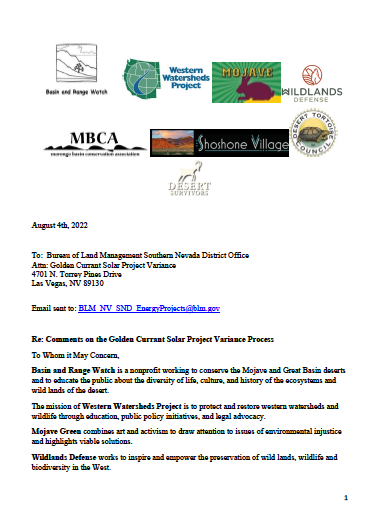Coalition Letter on the Variance Process for Golden Currant Solar Project
August 9, 2022 - Pahrump NV - The proposed Golden Currant Solar Project is undergoing a Variance Review process and the Bureau of Land Management (BLM) has recently segregated mineral rights for 2 years to consider an application for a 4,300-acre solar project.
A coalition of conservation groups, including the Desert Tortoise Council, Mojave Green, Wildlands Defense, and individuals signed a letter by Basin & Range Watch, see the pdf here.
Under the 2012 Solar Programmatic Environmental Impact Statement, Variance Areas of public land outside the designated Solar Energy Zones include about 20 million acres where applications will be reviewed on a case-by-case basis. Options to combine federal and non-federal land will be looked at, as well as disturbed lands. Presence of conflicts, such as tortoise density, will also be considered. These applications will undergo public scoping.
The BLM is basing the variance review on an old and outdated Resource Management Plan (RMP) called the Las Vegas Resource Management Plan that was completed in 1997. The plan is 25 years old. In the meantime, many new issues have arisen:
Desert Tortoise – In 2021, biologists removed nearly 3 times the amount of desert tortoise predicted to be on the adjacent Yellow Pine Solar Project site on a record-breaking drought year, many of which were killed by predators. Eleven additional tortoises were located on the site since the original translocation—one of which was run over by a vehicle (personal communication, July 29, 2022, BLM). The federally threatened Mojave desert tortoise has experienced drastic declines and the International Union for Conservation of Nature’s (IUCN) Species Survival Commission, Tortoise and Freshwater Turtle Specialist Group, now considers the Mojave desert tortoise to be Critically Endangered.
Fugitive Dust – Large-scale solar developers can’t seem to ever control fugitive dust emissions caused by their projects. This is very difficult in arid regions and the projects develop four to ten square miles of land at a time. In addition to being a visual eyesore, the human health risks stemming from disturbed topsoils/blowing dirt and dust events, is a rising problem. According to numerous studies Coccidioides immitis is a fungus found in the soil; clinical infections have a strong association with blowing dust events in the Southwestern United States. Blowing dust events can cause significant morbidity and mortality in the general population causing acute respiratory failure and exacerbations of chronic respiratory diseases, such as asthma and COPD1.
Old Spanish National Historic Trail – The project would be located about 2 miles away from the Old Spanish Trail. A large industrial project would destroy the historic view-scape of the area as well as cause desecration to this national historic treasure.
Important Mojave Desert Habitat – The project would impact high quality Mojave Desert habitat and remove several thousand Mojave yucca plants. It would also impact mesquite woodlands and associated species. The rare Pahrump buckwheat has been found on the project site.
Water – The project would need over 1,000 acre-feet of water for construction and 200-acre feet a year for operation for 30 years which is 6,000 acre feet. All basins are over-allocated.
Public Land Access – Large areas of public lands (up to 7 square miles) would be blocked off by fences and solar panels.
Visual Impacts – The project would be visible for several miles and from wilderness areas in Nevada and California, and even from high elevations in Death Valley National Park.
Paleontological Resources – The project possibly contains Plio-Pleistocene megafaunal fossils, such as mammoth.
Pahrump Paiute Ethnography – The Golden Currant Site is adjacent to both Stump Springs and Brown’s Spring. The mesquite areas throughout this valley constitute an important part of the Pahrump Paiute’s cultural landscape.
Field Trip to Proposed Golden Currant Solar Project Site
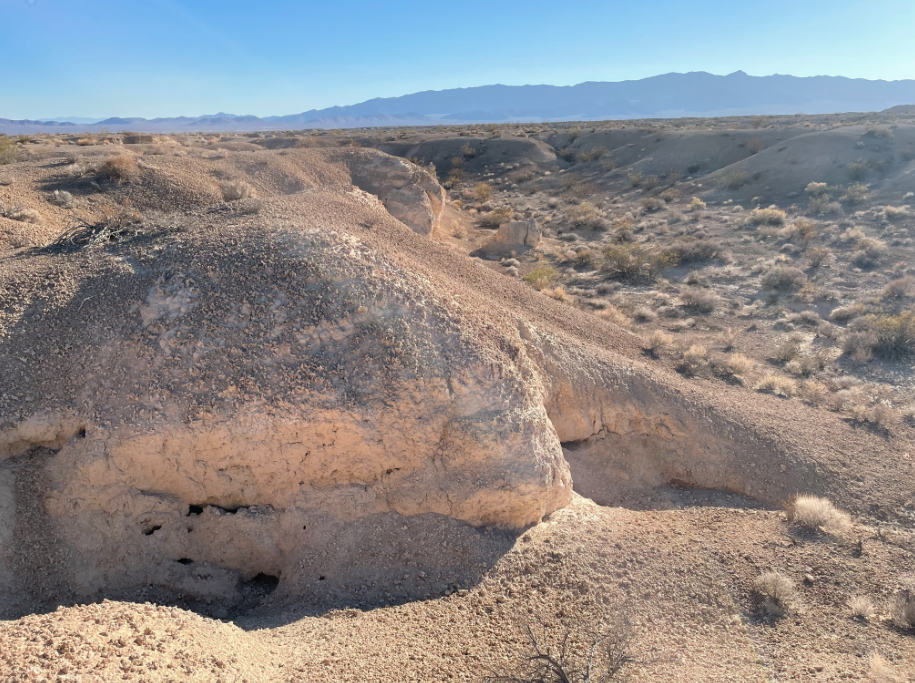
^Badlands on the proposed site of the Golden Currant Solar Project along Front Site Road.
July 24, 2022 - Pahrump, NV - Basin & Range Watch undertook a field trip and site visit in early July, 2022, to the proposed Golden Currant Solar Project, along the Fornt Site Road off Tecopa Road. We were amazed at how 40-50% of the proposed project site is full of badlands with deep washes and vertical cliff topography--this is not a flat desert landscape. Also, honey mesquite thickets are common in the badland washes and interfluves. The other parts of the site have ancient desert soils and Mojave yuccas. Our photos follow.
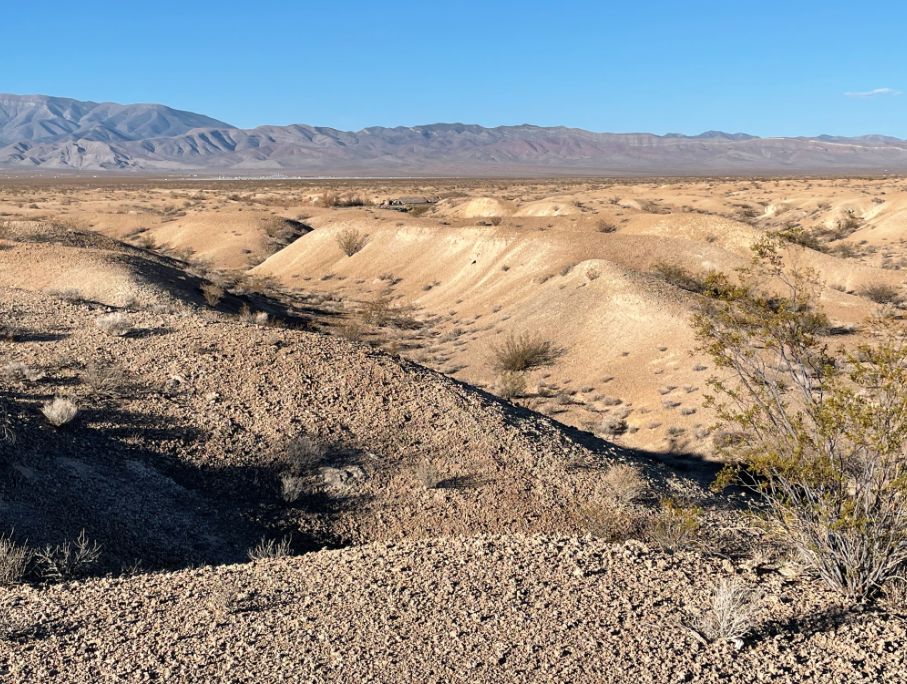
^Badland topography--how can you build a solar project here?
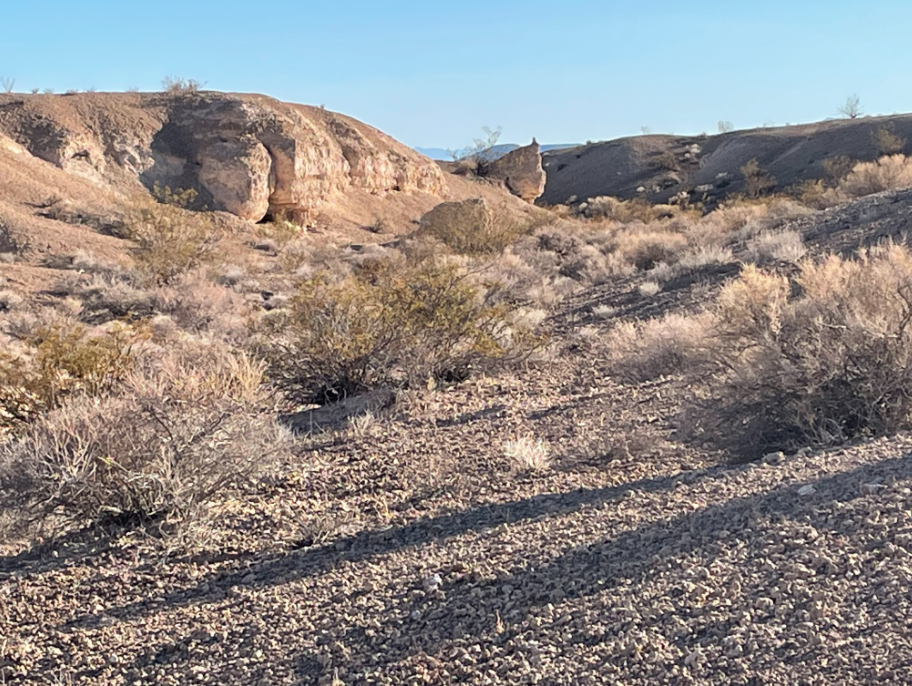
^Hiking in a badland ravine on the proposed solar site.
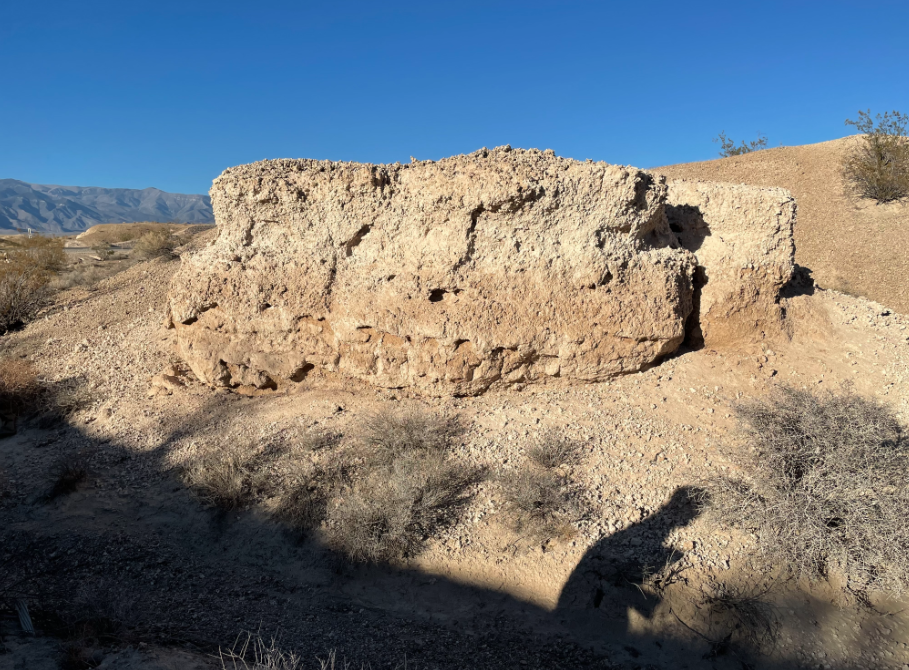
^Hiking by a badland formation. How will the solar developer build a utility-scale solar project here? This is not flat.
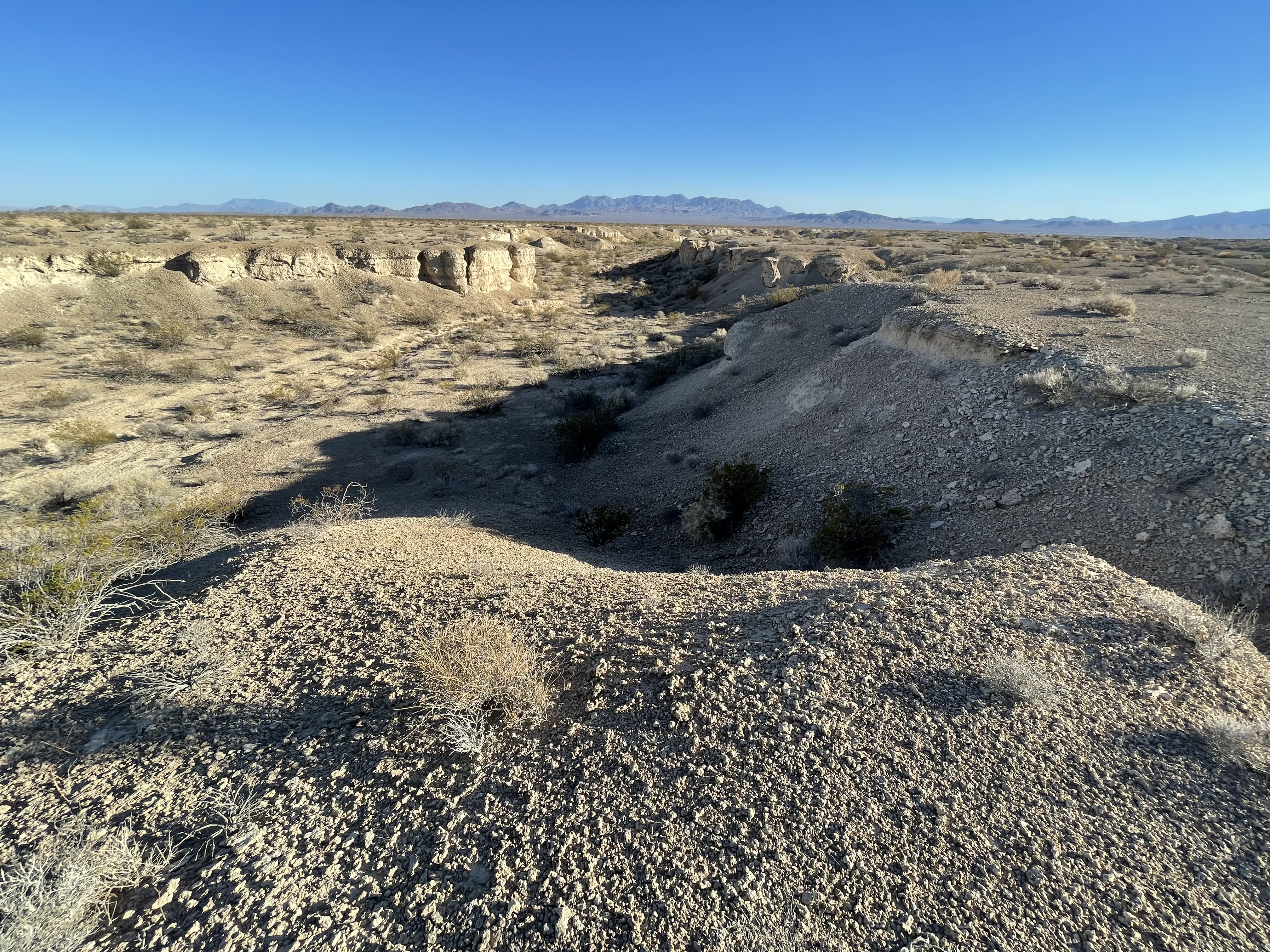
^More badalnds on the proposed Golden Currant Solar Project site, looking down from the higher areas.
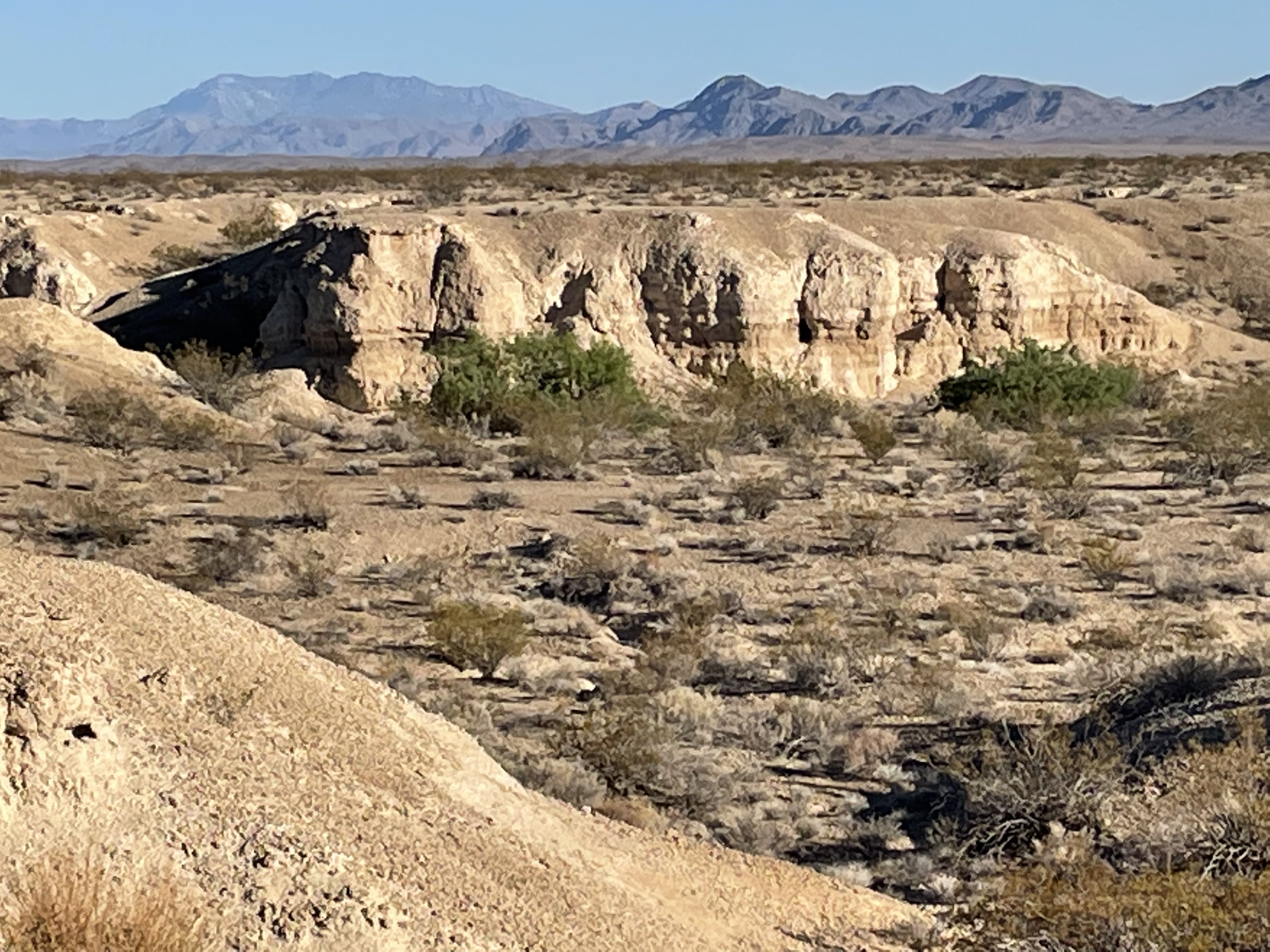
^Badlands and honey mesquite.
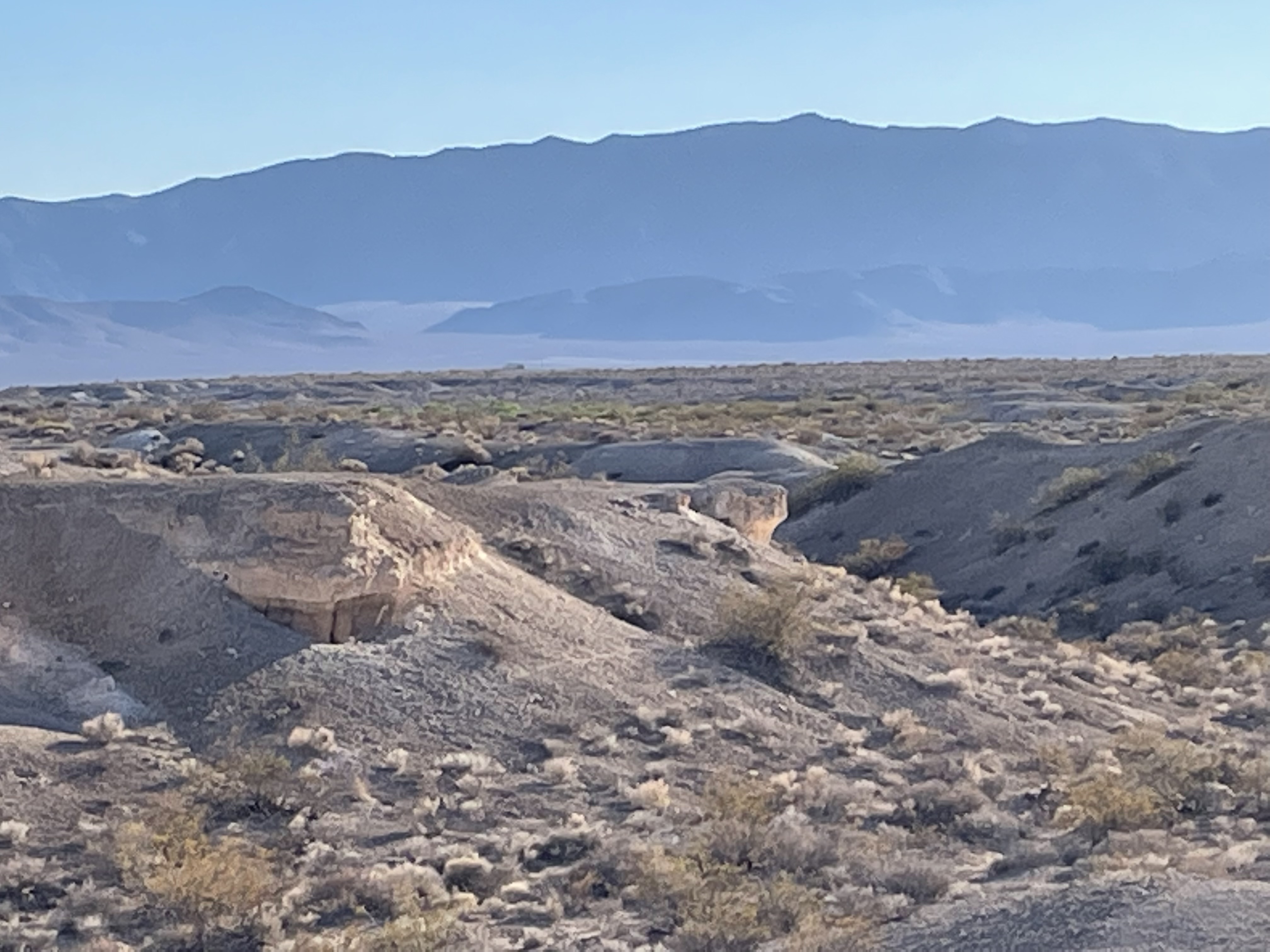
^Badlands on the proposed solar project looking westwards towards the Kingston Range.
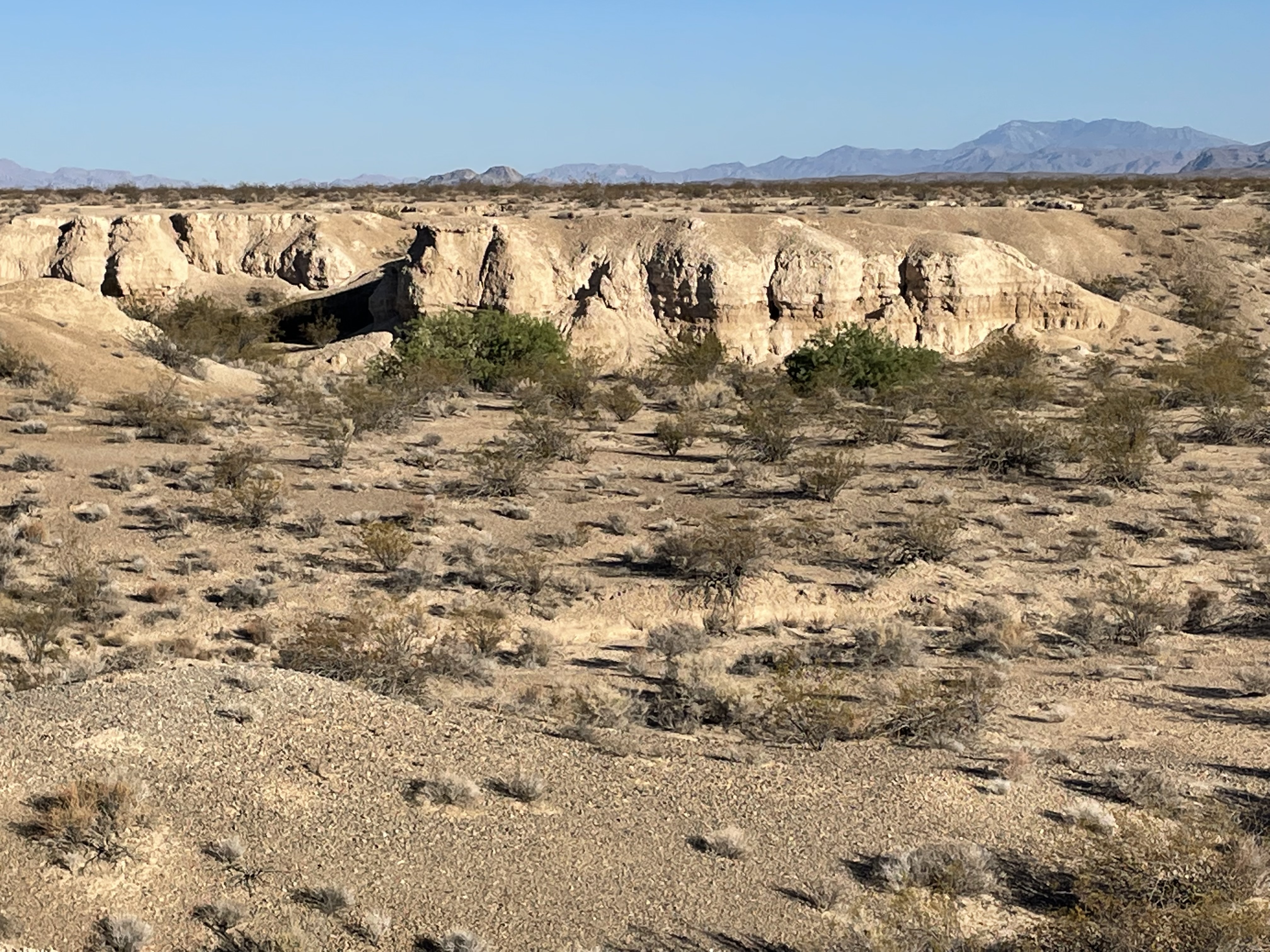
^Badland cliffs, honey mesquite, and low valley with wash. This is not photovoltaic solar energy project topography and should have never been included in Variance Areas.
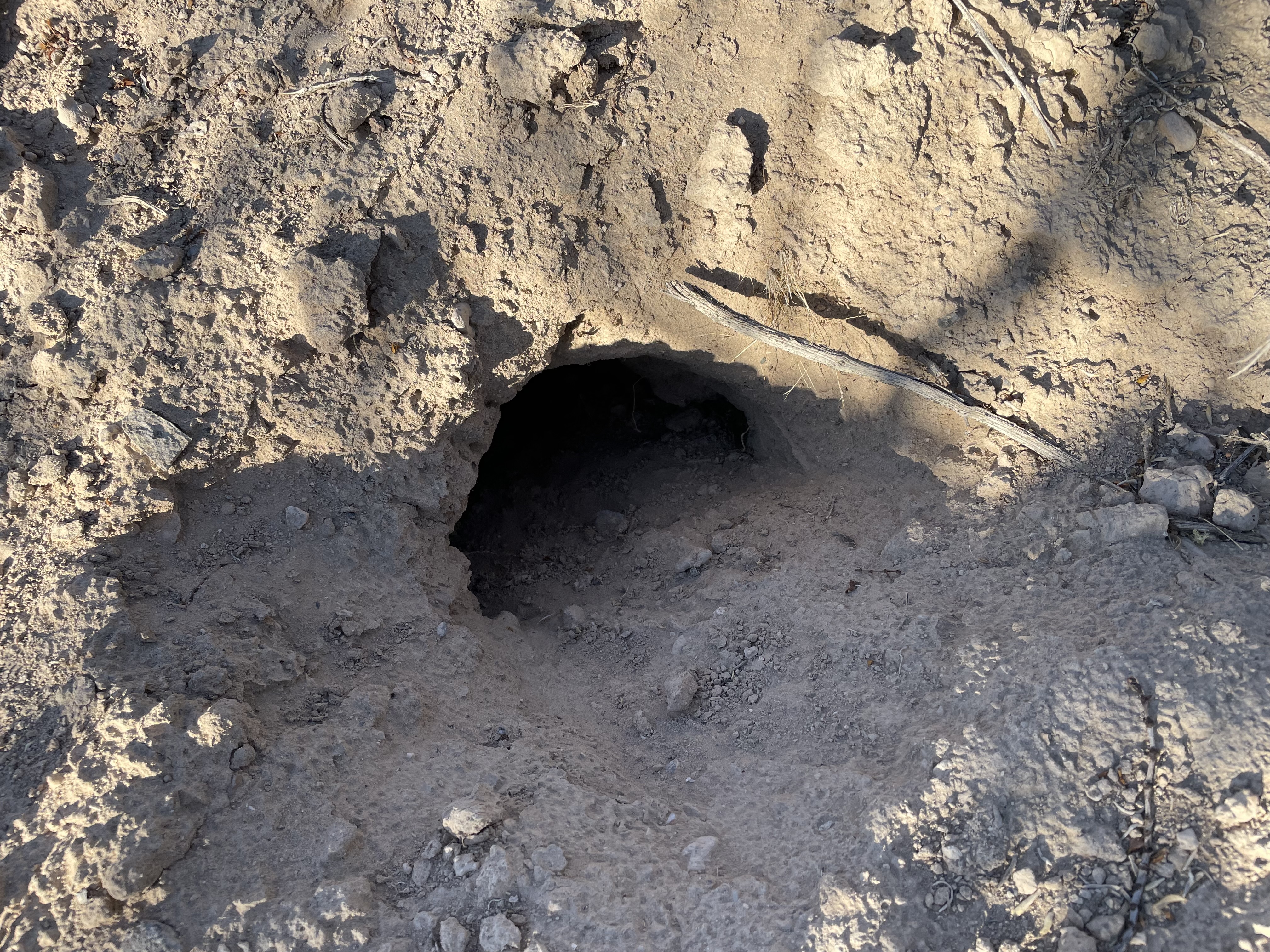
^Several active desert tortoise burrows, including this one, were found in the areas in the above photos, in the lowlands.
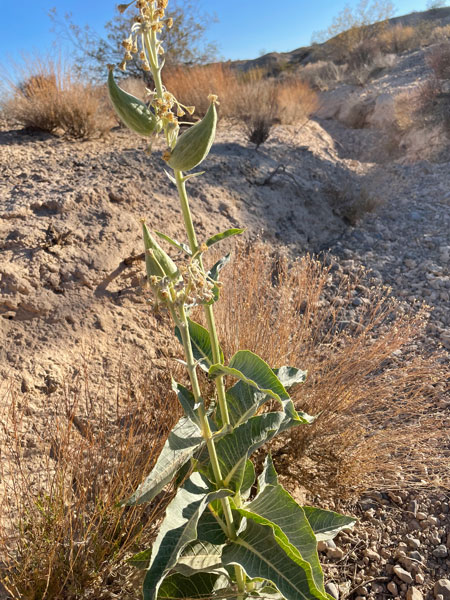
^Milkweed in a wash between badland uplands on the proposed Golden Currant Solar Project site. This is a host plant for Monarch butterflies.
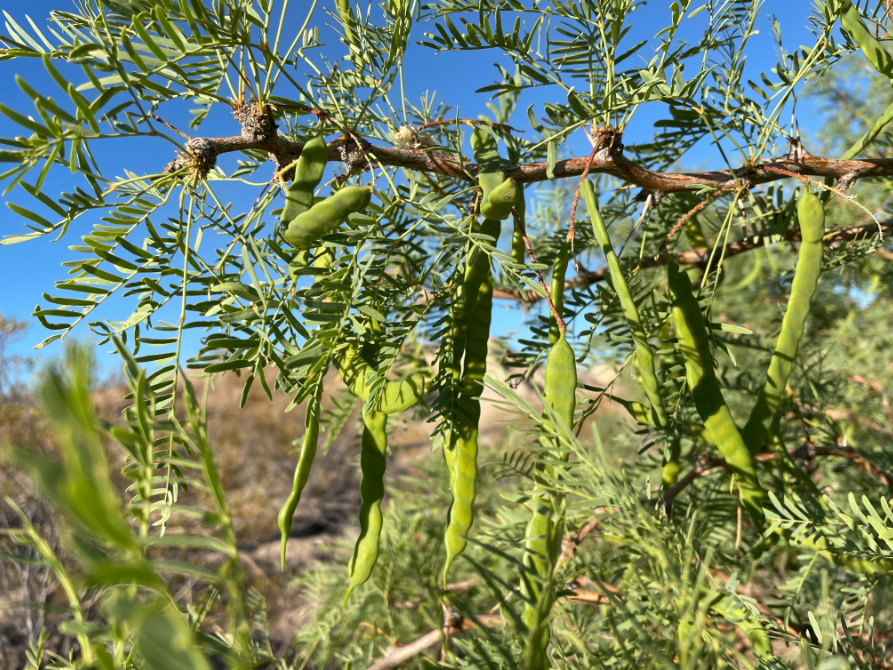
^Honey mesquite are common on the proposed solar project site.
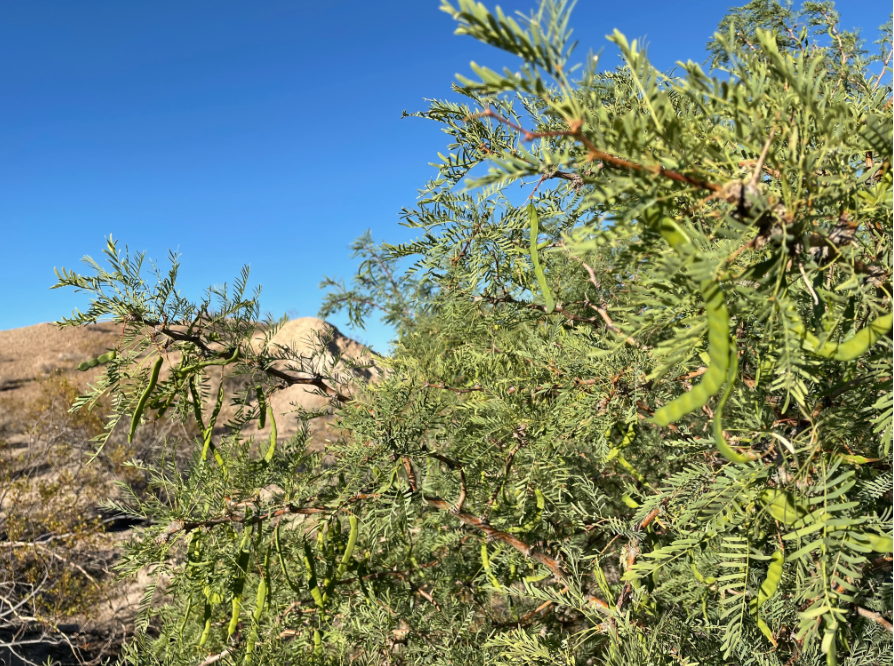
^Honey mesquite on the proposed Golden Currant Solar Project site.
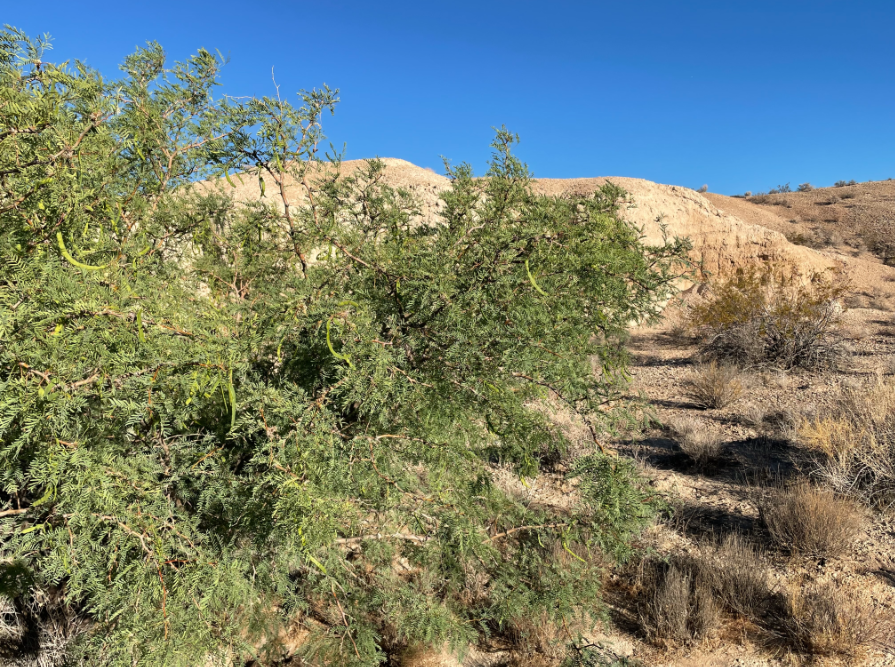
^Honey mesquite in valleys between upland badlands.
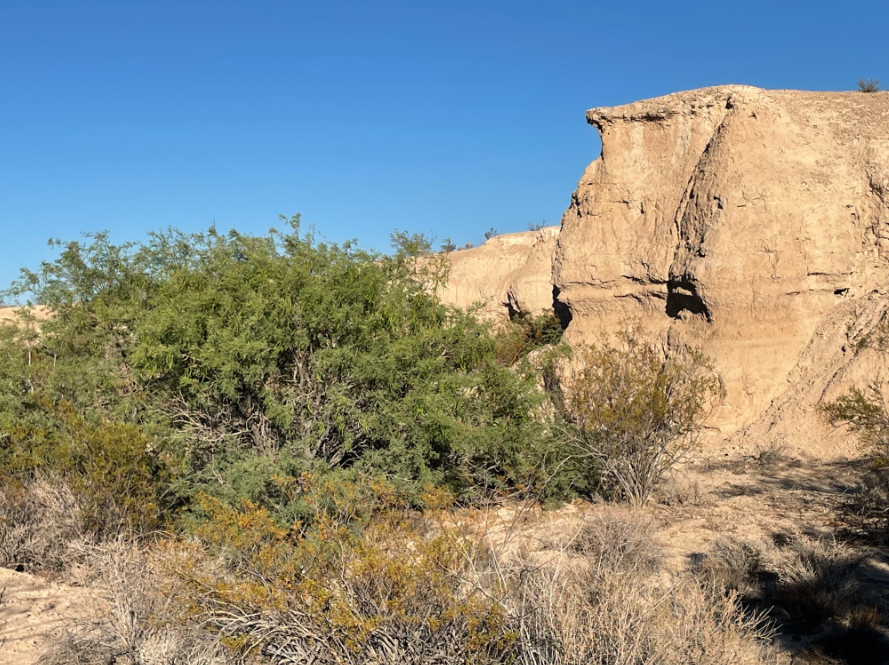
^Honey mesquite and badland cliff. How can this be a solar project site?
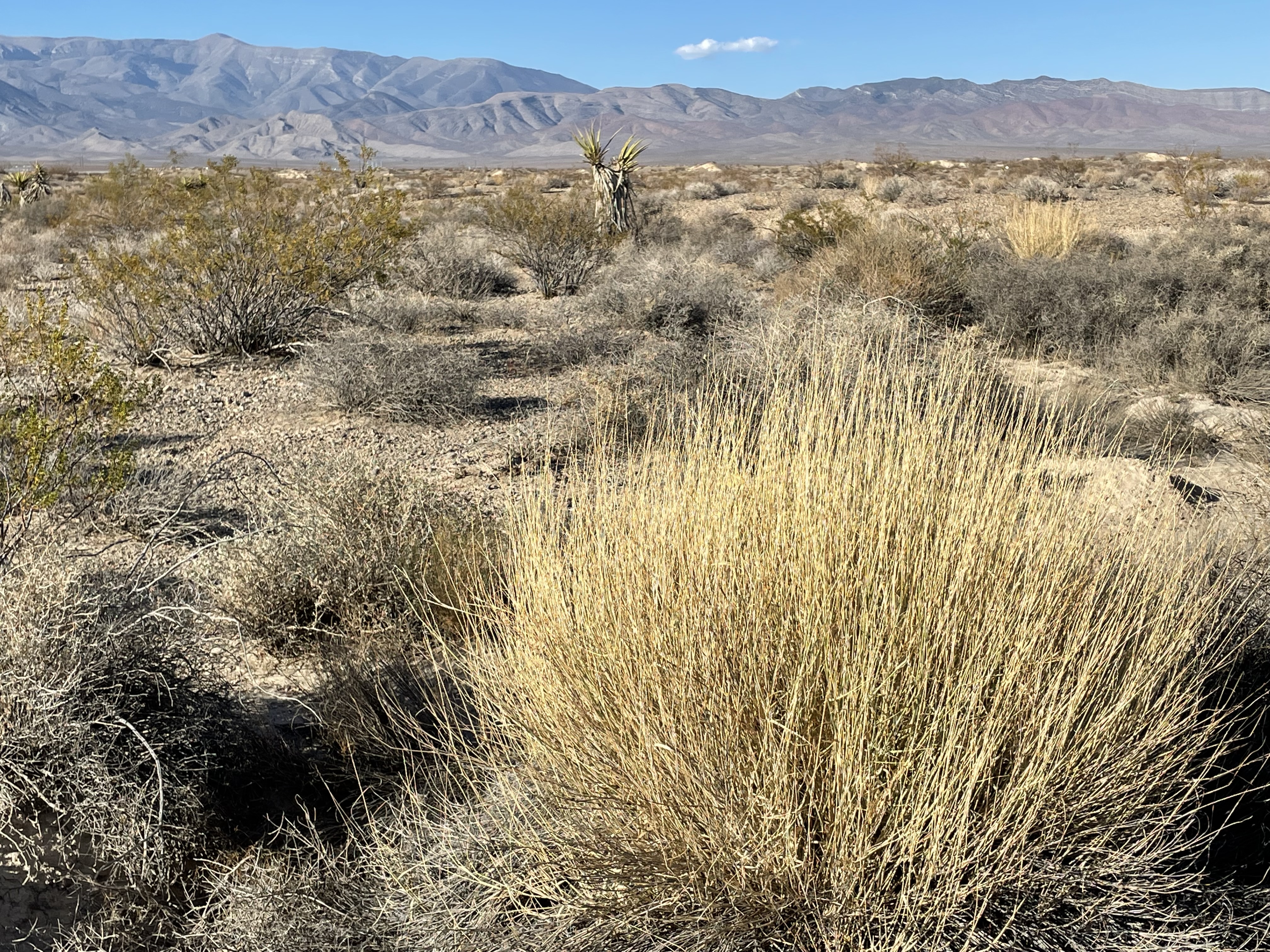
^Big galleta grass in a wash on the flatter portion of the proposed Golden Currant Solar Project site. The Spring Range is in the distance to the east.
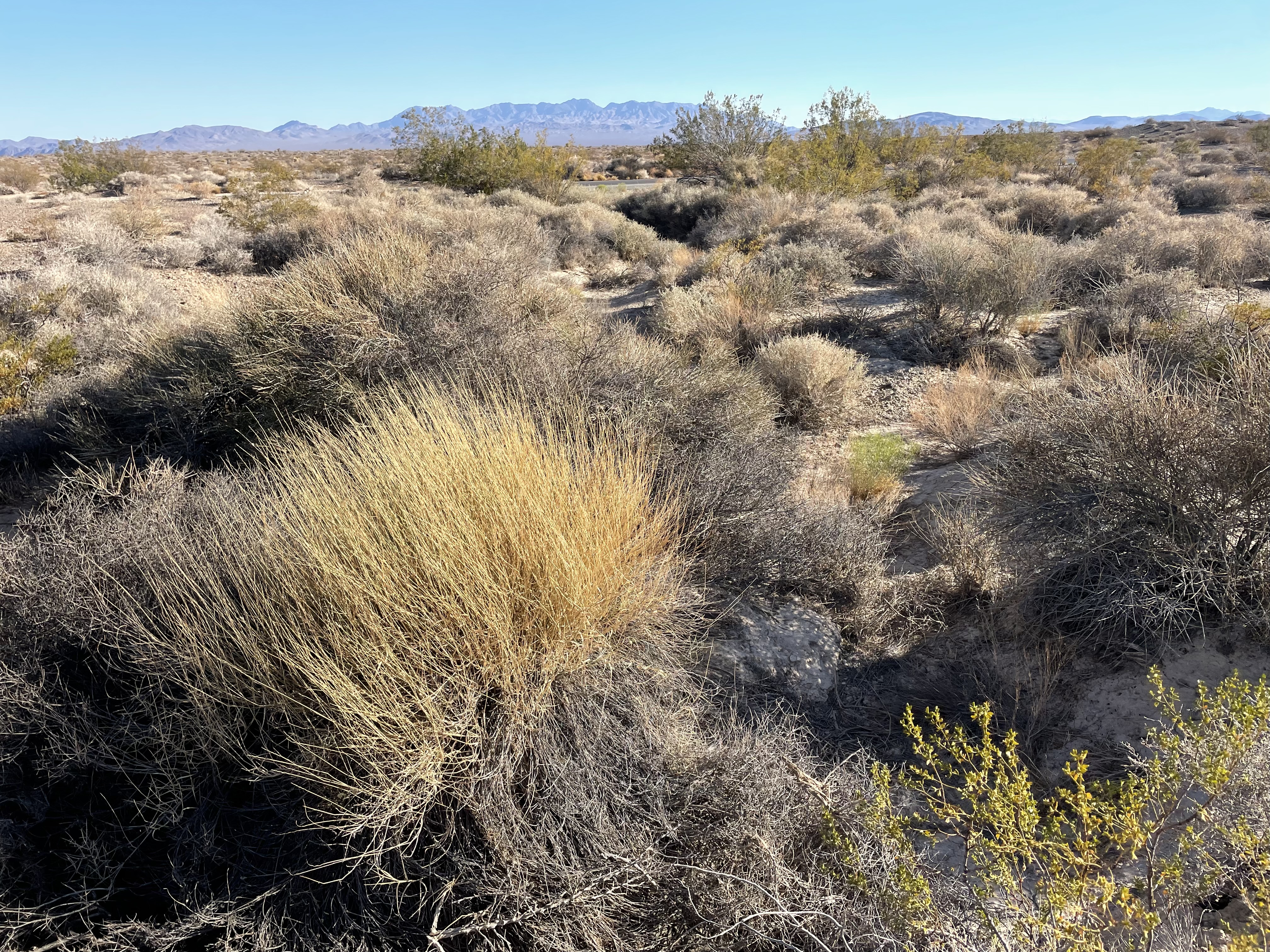
^Galleta grass in wash looking west towrds the Kingston Range.
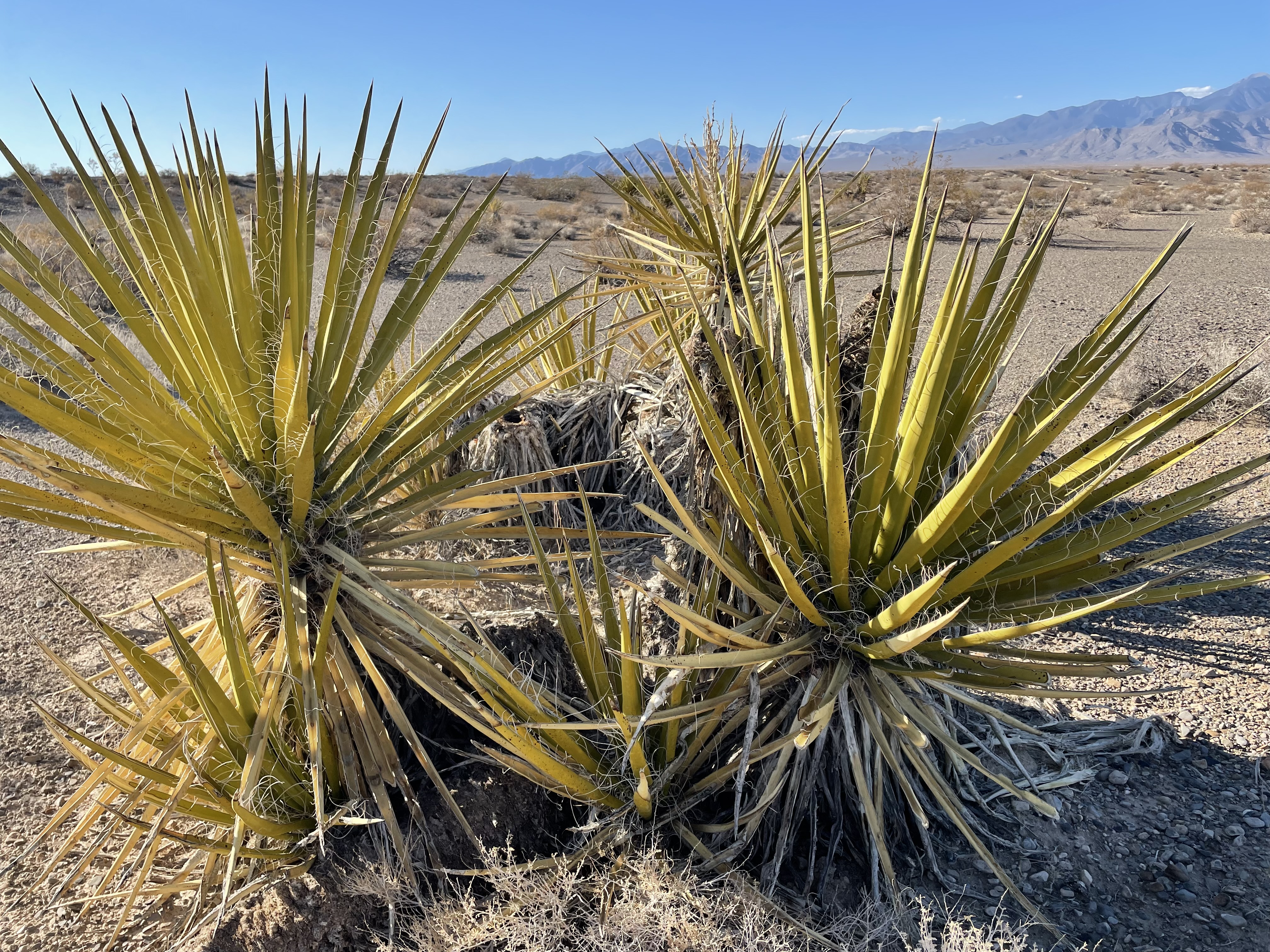
^Mojave yucca on the project site.
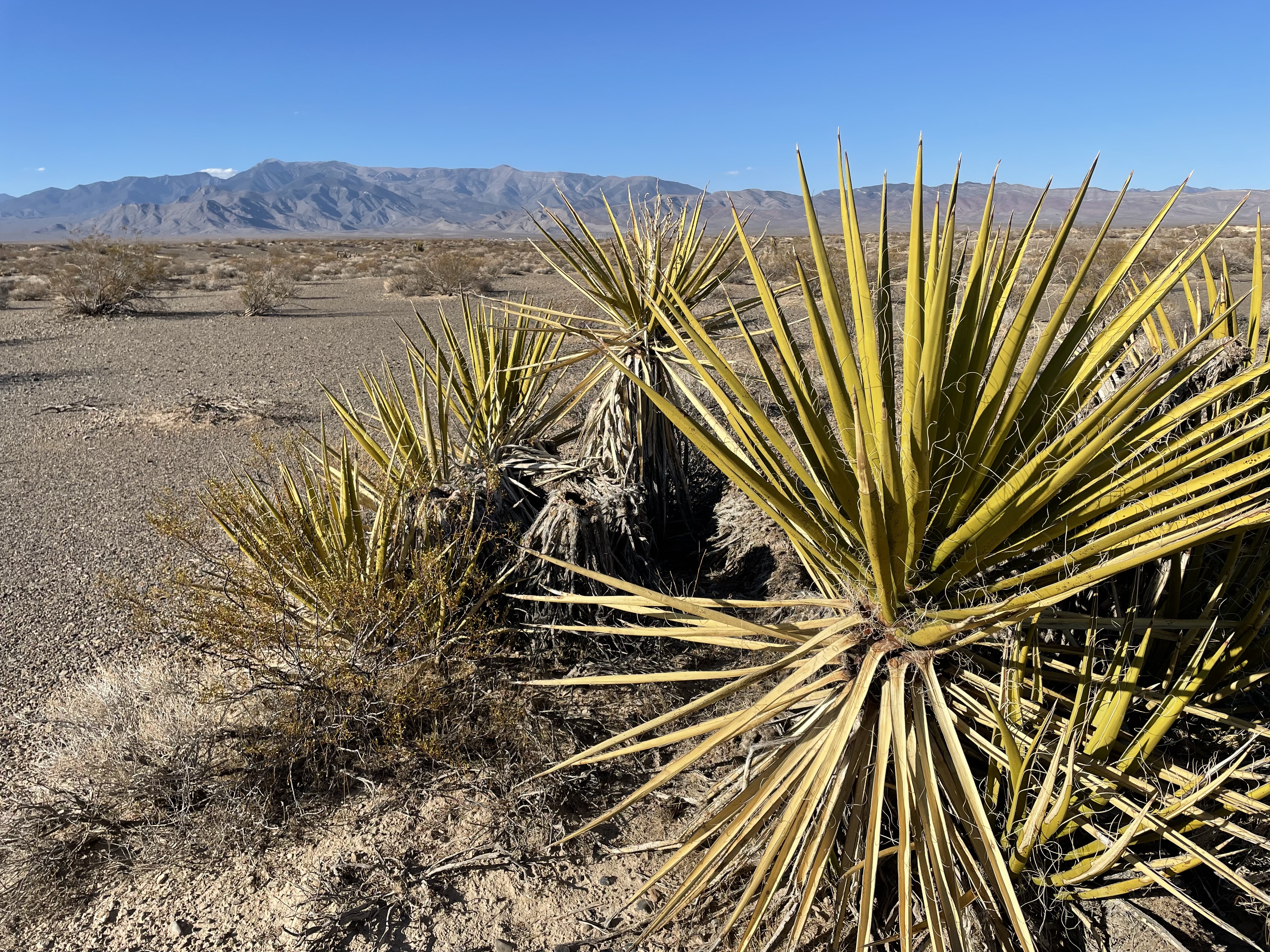
^Mojave yuccas are common on the flatter portions of the proposed project site.
Bureau of Land Management Places Golden Currant Solar Project on Medium Priority Satus
July 17, 2022 - Pahrump, NV - In November 2020 the Bureau of Land Management (BLM) recieved an application nest to the Yellow Pine Solar Project, called the Sagittarius Solar Project. The BLM placed the application on Medium Priority Ststus (not High Priority) due to resource conflicts.
See the Sagittarius (Golden Currant) Prioritization worksheet. The BLM placed this project on what they call "Medium Priority". This does not stop the project, but places other projects on a Higher priority to process the applications. The developers will often lobby and challenge the BLM's decision. Because the Trout Canyon substation is now built and it can carry a large capacity beyond Yellow Pine Solar, there will be demand for about 3 or 4 other projects in this location. There are some factors that will cause BLM to probably reduce the footprint of the project, but it is a real possibility for development. Because it is early in the review, now is the time to tell BLM no. It is close to the Old Spanish Trail. They say they will avoid the mesquite, but they will surround them with solar panels. It is in a high conflict area for Death Valley National Park.
Primergy bought the application and renamed it "Golden Currant"--https://primergysolar.com, a subsidiary of Avangrid Renewables. If you track the corporate subsidiary chart through Googling companies, you see that now Primergy/Avangrid have been bought by the giant utility company Iberdrola, based in Spain--famous for wind projects. Iberdrola is a Spanish multinational electric utility company based in Bilbao, Spain. https://www.iberdrola.com/home
See the Plan of Development >>here.
Proposed Golden Currant Solar Project in Pahrump Valley Moves Forward
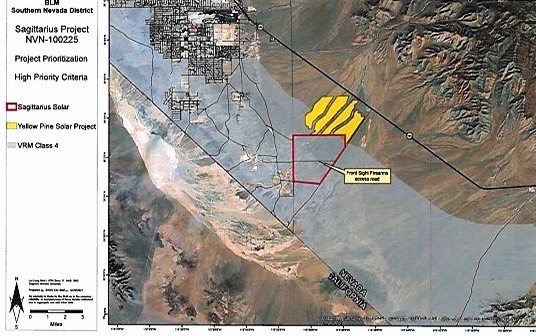
^Map of the proposed project in red outline, from the Plan of Development. The yellow shapes are the approved Yellow Pine Solar Project under construction.
July 2, 2022 - Pahrump, Nevada - Pretty name. But an ugly energy project proposed on public lands on tortoise habitat and Mojave Desert ecosystems. This is the former Sagittarius Solar Project in Clark County, west of the Yellow Pine Solar Project now under construction.
Golden Currant Solar is proposed on 4,300 acres of desert tortoise habitat in south Pahrump Valley, NV, along the Tecopa Road. The Bureau of Land Management will segregate the identified lands for two years from appropriation under the public land laws, including location under the Mining Law, subject to valid existing rights. This means no one will be able to stake a new mining claim, in order to help streamline the environmental review of this large solar project.
https://www.blm.gov/press-release/land-segregation-announced-golden-currant-solar-project
This desert is just north of the Stump Springs Area of Critical Environmental Concern, containing rsch honey mesquite grives and ravines. Our photos of the honey mesquite here, below.
^Honey mesquite on public lands in the vincity of the proposed Golden Currant Solar Project, looking westward towards the Kingston Range in California.
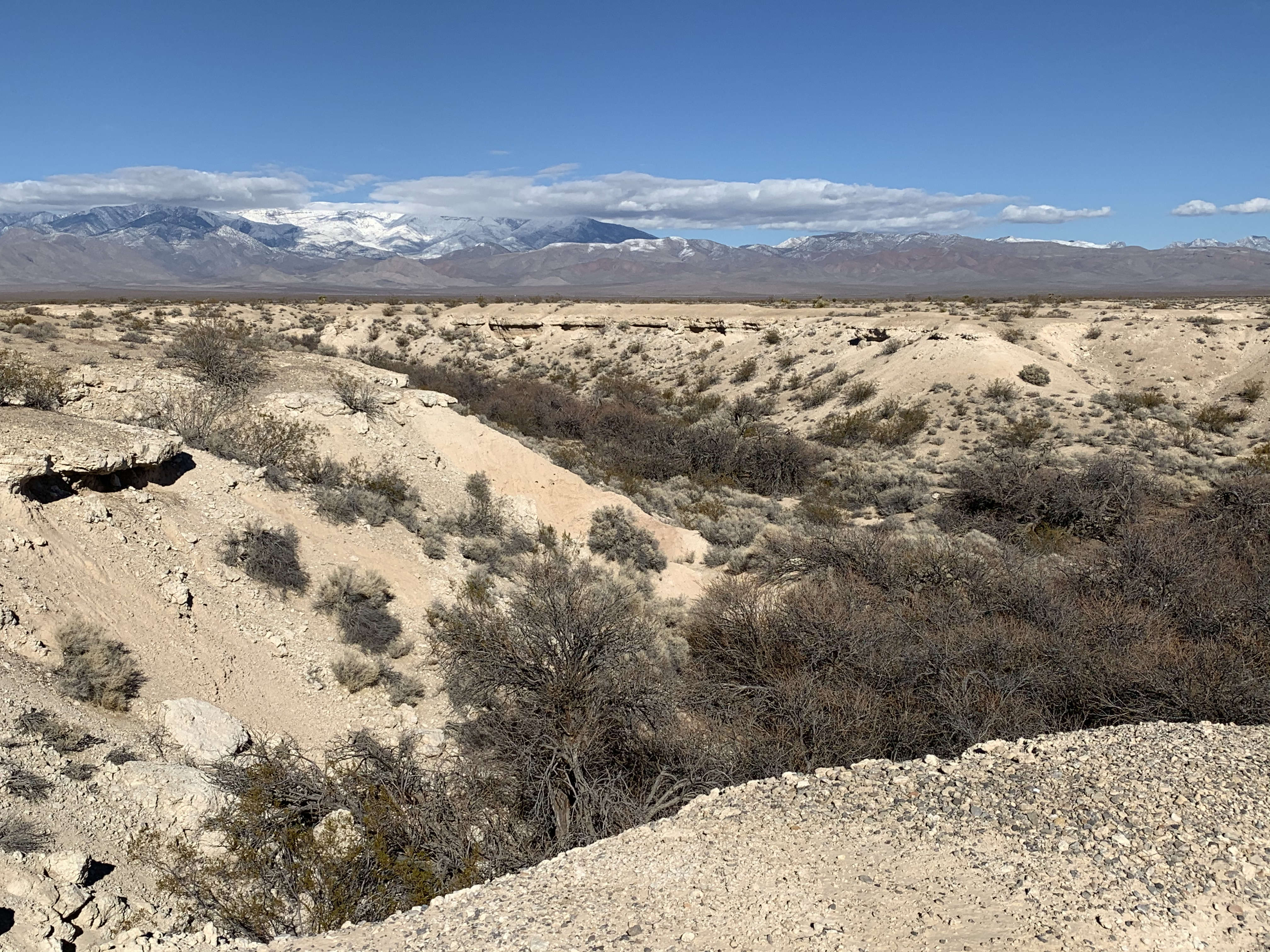
^Winter honey mesquite in old spring-fed ravines in the Stump Springs Area of Critical Environmental Concern in south Pahrump Valley. The snowy Spring Range is in the distance.
Home.....Yellow Pine Solar Project.....Rough Hat Nye and Clark Solar Projects.....Copper Rays Solar Project
